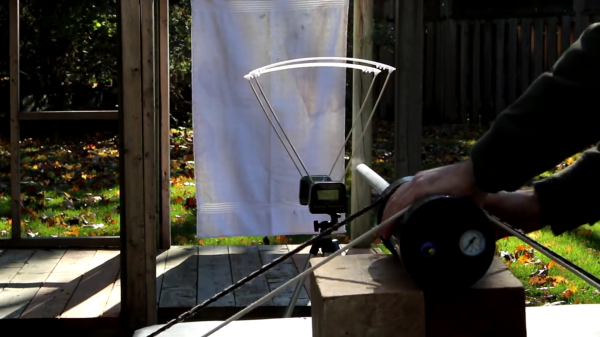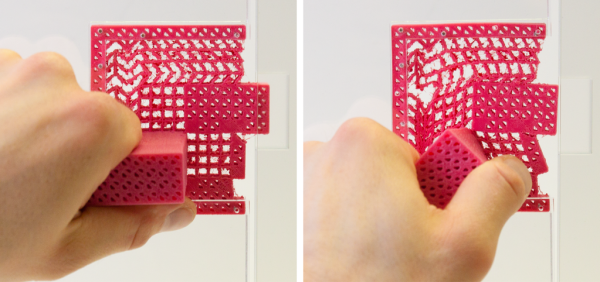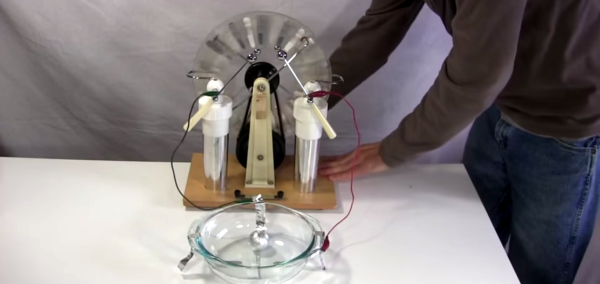[austiwawa] was playing around with one of those simple linear motors people build as friendly little science experiments. There’s an AA battery in the middle of a set of magnets. When you put it inside of a spring it zips around inside until you run out of spring or magic pixies in the battery.
Of course, the natural question arose, “How do I make it go fast!? Like fast!” After making explosion and woosh noises for a bit (like any good hacker would) he settled down and asked a more specific question. If I made the coil the barrel of an air gun, and then shot the battery out… would it go faster?
So, he built an air cannon. It took some ingenuity and duct tape, but he managed to line the barrel with a copper coil. After that he built an experimental set-up, because making something dangerous is only okay if it’s science. That’s the difference between sensible adults and children.
He shot three “dead” rounds through the cannon, and got a baseline result. These dead rounds were made so by placing the magnets at the improper polarity to forego the motion-boosting properties. Then he shot three live ones through. It went measurably faster! Neat!
What’s the silliest thing you’ve ever seen properly characterized? Let us know in the comments below.
Continue reading “Weaponizing Elementary Science Experiments”

















